Some of these festivals are deeply rooted in religion or history, while others are merely for fun. All of them, however, are a crucial part of their host city or country’s culture. Whether getting pelted with tomatoes, dusted in colorful powder or soaked by a perfect stranger donning a water gun, all eight of these festivals from around the world deserve a spot on your bucket list.
1. La Tomatina
Buñol, Spain
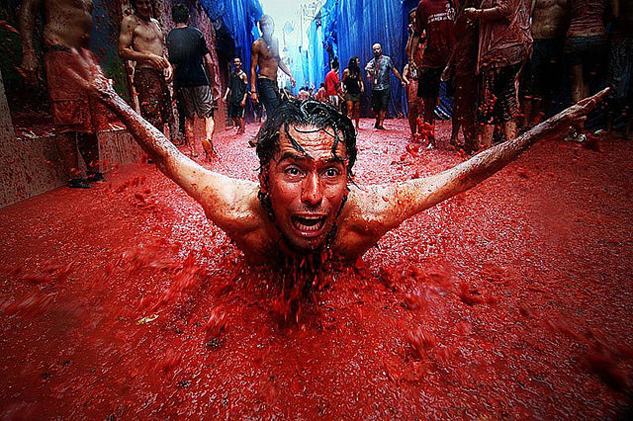
Photo by nedim chaabene, CC BY 2.0
Once a year the Spanish town of Buñol is quite literally painted red during La Tomatina. The festival involves tens of thousands of participants hurling overly-ripe tomatoes at each other near the end of August. Fear not, the tomatoes are pre-squashed to ease the sting of impact. The festival lasts for a week, but the tomato fight is restricted to one hour. It’s estimated the in that single hour around 100 metric tons of tomatoes are thrown.
2. Burning Man
Black Rock City, Nevada
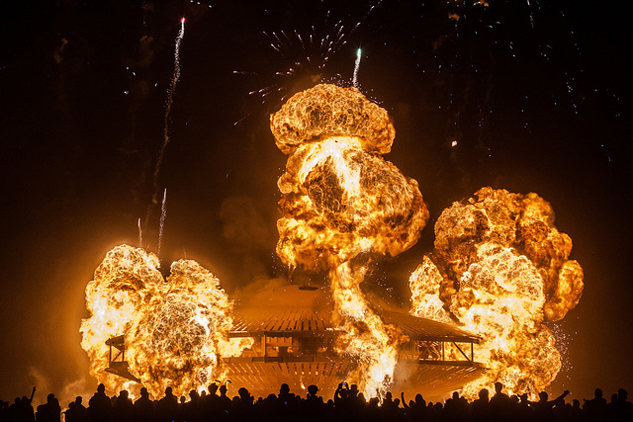
Photo by Duncan Rawlinson, CC BY-NC 2.0
You’ve likely heard stories and most certainly seen pictures of the annual gathering that is Burning Man. Every year at the end of August a temporary community forms in the Black Rock Desert of Nevada to practice radical self-expression and inclusion, among the eight additional principals the gathering observes. The event culminates in the burning of a giant effigy for which Burning Man is named after. Throughout the week, creativity is the communal language spoken, which is evident in the imaginative outfits worn by attendees, the art installations and activities that dot this ephemeral desert community.
3. Día de Muertos
Mexico
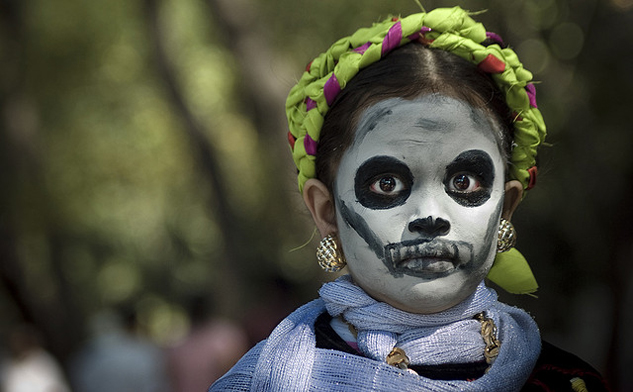
Photo by Eneas De Troya, CC BY 2.0
Día de Muertos (or Dia de los Muertos) is a holiday predominantly celebrated in Mexico, as well as Central and South America. Families and friends gather to honor deceased loved ones by visiting their graves with marigolds, sugar skulls, as well as food and drinks. Some children adorn masks or paint their faces and visit the homes of neighbors asking for candy, much like Halloween. In Mexico the day occurs on November 2.
4. Holi
India

Photo by supratik chakraborty, CC BY 2.0
The Hindu festival of colors known officially as Holi is a feast for the eyes. Occurring each year at the beginning of spring, the festival is celebrated by throwing brightly colored powder at participants, along with bonfires, singing, dancing and the eating of delicacies. The rainbow of powders is said to represent the colors of spring. Holi is celebrated in India, Nepal and beyond and is meant as a way to recharge before the new year begins.
5. Oktoberfest
Munich, Germany
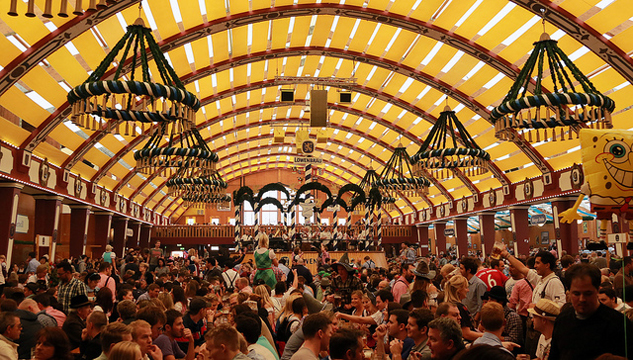
Photo by xsnowdog, CC BY-NC 2.0
Although it has inspired celebrations of the same name around the world, Munich’s Oktoberfest is not only the original, but it’s also the world’s largest beer festival. It’s held for 16 days between the end of September and beginning of October. Along with copious amounts of beer, festival attendees consume sausages, pretzels, potato pancakes, and more as they play games, sing and dance. Millions of people from around the world attend Oktoberfest each year. If you plan on being one of them, know that only beer brewed within Munich is served.
6. Carnival
Brazil
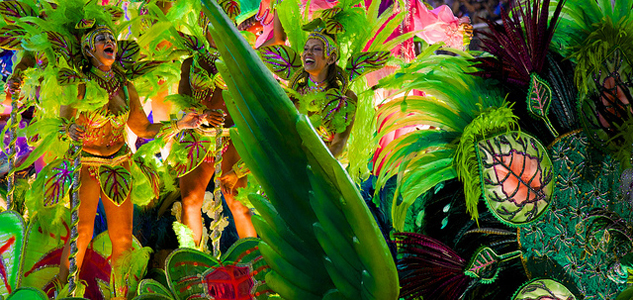
Photo by Nicolas de Camaret, CC BY 2.0
Brazil’s annual Carnival is a cacophony and a clash of color and lights. For nearly a week, cities across the country ignite in celebration. Rio de Janeiro and São Paulo have two of the largest Carnivals, consisting of massive parades led by various street bands and featuring costumed and choreographed performances by local samba schools.
7. Songkran
Thailand
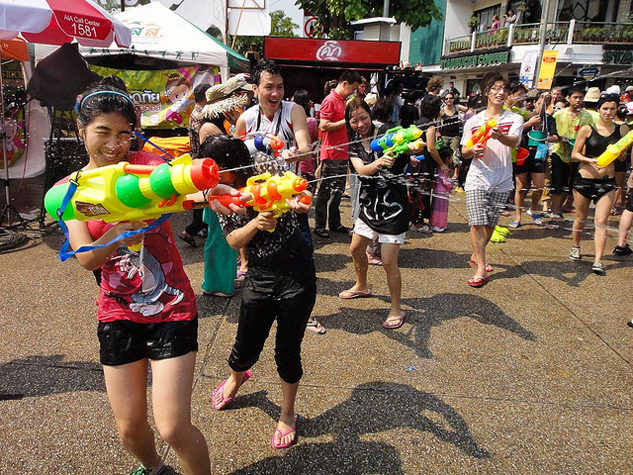
Photo by John Shedrick, CC BY 2.0
Throughout Southeast Asia the New Year is celebrated in April with a lively water festival. In Thailand it’s known as Songkran. For three days people take to the streets with water guns, buckets and hoses as ritual cleansing meets water sport. The act of dousing friends, family and well-meaning strangers symbolizes the washing away of misfortunes and misgivings from the previous year and a gesture of bringing good luck in the year ahead.
8. Mardi Gras
New Orleans, Louisiana

Photo by Pieter Morlion, CC BY-NC-ND 2.0
Far more than beads and boobs, New Orleans’ Mardi Gras is a world-renowned Carnival celebration in late winter, usually between February and March. The big party is held on Fat Tuesday, but the weeks leading up to Lent are filled with festivities from parades to parties. On the main day of Mardi Gras, masks and elaborate customs are worn and parades all held throughout the day and night. Join the throngs of people who gather in the streets to catch colorful beaded necklaces that are thrown from the floats. Many visitors will congregate around the French Quarter, but head beyond Bourbon Street to witness a more traditional Mardi Gras that doesn’t require exposing oneself for jewelry.
Top photo: Joaquin Murillo, CC BY-NC-ND 2.0
Paste Travel’s Bucket List columnist Lauren Kilberg is a Chicago-based freelance writer. Her travels have found her camping near the Pakistani border of India and conquering volcanoes in the Philippines.